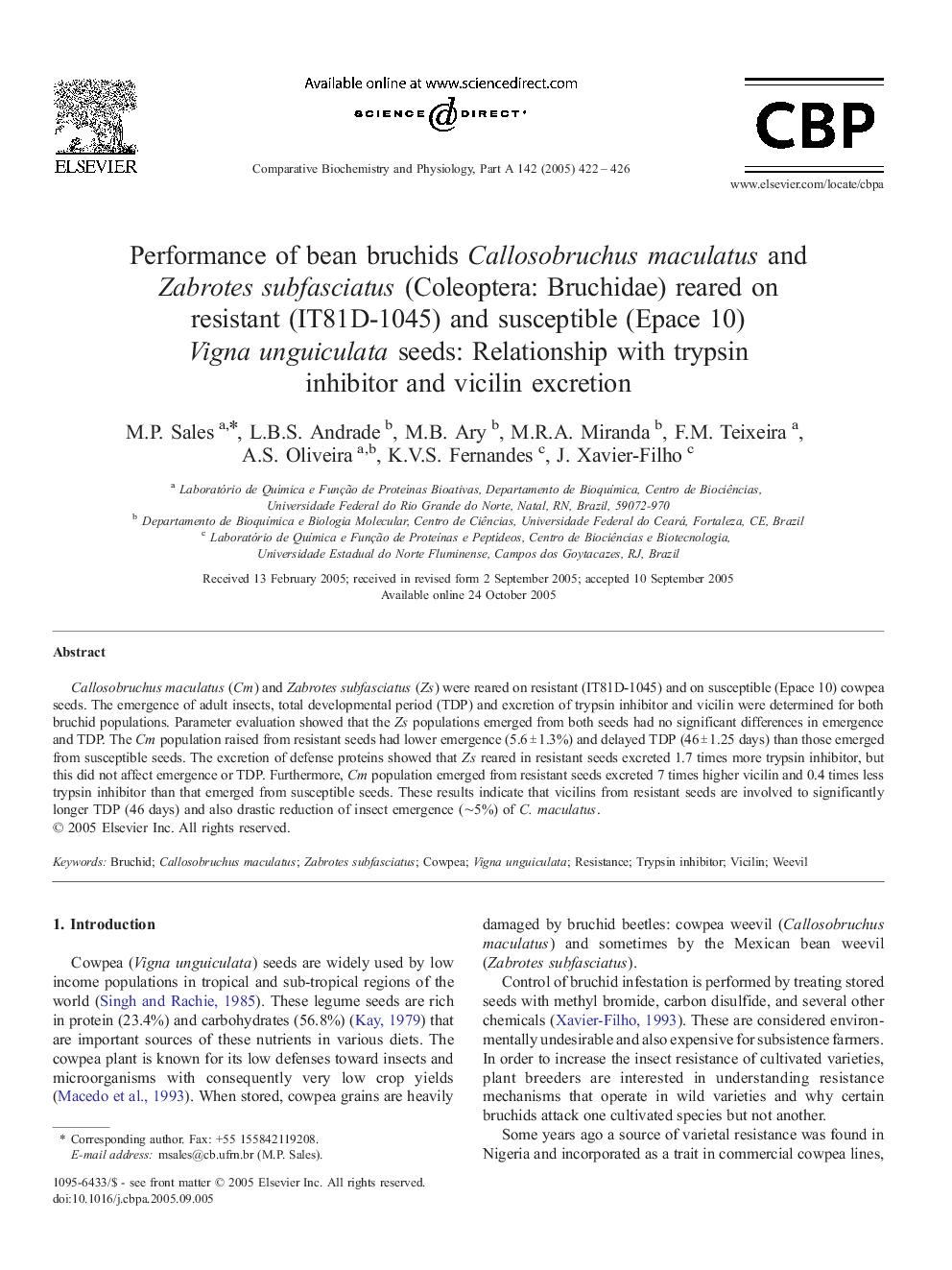| Article ID | Journal | Published Year | Pages | File Type |
|---|---|---|---|---|
| 10819044 | Comparative Biochemistry and Physiology Part A: Molecular & Integrative Physiology | 2005 | 5 Pages |
Abstract
Callosobruchus maculatus (Cm) and Zabrotes subfasciatus (Zs) were reared on resistant (IT81D-1045) and on susceptible (Epace 10) cowpea seeds. The emergence of adult insects, total developmental period (TDP) and excretion of trypsin inhibitor and vicilin were determined for both bruchid populations. Parameter evaluation showed that the Zs populations emerged from both seeds had no significant differences in emergence and TDP. The Cm population raised from resistant seeds had lower emergence (5.6 ± 1.3%) and delayed TDP (46 ± 1.25 days) than those emerged from susceptible seeds. The excretion of defense proteins showed that Zs reared in resistant seeds excreted 1.7 times more trypsin inhibitor, but this did not affect emergence or TDP. Furthermore, Cm population emerged from resistant seeds excreted 7 times higher vicilin and 0.4 times less trypsin inhibitor than that emerged from susceptible seeds. These results indicate that vicilins from resistant seeds are involved to significantly longer TDP (46 days) and also drastic reduction of insect emergence (â¼5%) of C. maculatus.
Keywords
Related Topics
Life Sciences
Biochemistry, Genetics and Molecular Biology
Biochemistry
Authors
M.P. Sales, L.B.S. Andrade, M.B. Ary, M.R.A. Miranda, F.M. Teixeira, A.S. Oliveira, K.V.S. Fernandes, J. Xavier-Filho,
